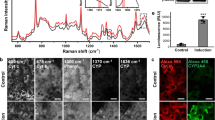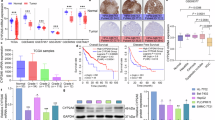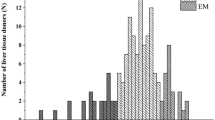Abstract
Aim:
Tetrandrine, an alkaloid with a remarkable pharmacological profile, induces oxidative stress and mitochondrial dysfunction in hepatocytes; however, mitochondria are not the direct target of tetrandrine, which prompts us to elucidate the role of oxidative stress in tetrandrine-induced mitochondrial dysfunction and the sources of oxidative stress.
Methods:
Rat primary hepatocytes were isolated by two-step collagenase perfusion. Mitochondrial function was evaluated by analyzing ATP content, mitochondrial membrane potential (MMP) and the mitochondrial permeability transition. The oxidative stress was evaluated by examining changes in the levels of reactive oxygen species (ROS) and glutathione (GSH).
Results:
ROS scavengers largely attenuated the cytotoxicity induced by tetrandrine in rat hepatocytes, indicating the important role of ROS in the hepatotoxicity of tetrandrine. Of the multiple ROS inhibitors that were tested, only inhibitors of CYP450 (SKF-525A and others) reduced the ROS levels and ameliorated the depletion of GSH. Mitochondrial function assays showed that the mitochondrial permeability transition (MPT) induced by tetrandrine was inhibited by SKF-525A and vitamin C (VC), both of which also rescued the depletion of ATP levels and the mitochondrial membrane potential. Upon inhibiting specific CYP450 isoforms, we observed that the inhibitors of CYP2D, CYP2C, and CYP2E1 attenuated the ATP depletion that occurred following tetrandrine exposure, whereas the inhibitors of CYP2D and CYP2E1 reduced the ROS induced by tetrandrine. Overexpression of CYP2E1 enhanced the tetrandrine-induced cytotoxicity.
Conclusion:
We demonstrated that CYP450 plays an important role in the mitochondrial dysfunction induced by the administration of tetrandrine. ROS generated by CYP450, especially CYP2E1, may contribute to the mitochondrial dysfunction induced by tetrandrine.
Similar content being viewed by others
Log in or create a free account to read this content
Gain free access to this article, as well as selected content from this journal and more on nature.com
or
References
Xue Y, Wang Y, Feng DC, Xiao BG, Xu LY . Tetrandrine suppresses lipopolysaccharide-induced microglial activation by inhibiting NF-kappaB pathway. Acta Pharmacol Sin 2008; 29: 245–51.
He FQ, Qiu BY, Li TK, Xie Q, Cui de J, Huang XL, et al. Tetrandrine suppresses amyloid-beta-induced inflammatory cytokines by inhibiting NF-kappaB pathway in murine BV2 microglial cells. Int Immunopharmacol 2011; 11: 1220–5.
Huang P, Xu Y, Wei R, Li H, Tang Y, Liu J, et al. Efficacy of tetrandrine on lowering intraocular pressure in animal model with ocular hypertension. J Glaucoma 2011; 20: 183–8.
Li X, Lu X, Xu H, Zhu Z, Yin H, Qian X, et al. Paclitaxel/tetrandrine coloaded nanoparticles effectively promote the apoptosis of gastric cancer cells based on “oxidation therapy”. Mol Pharm 2012; 9: 222–9.
Liu C, Gong K, Mao X, Li W . Tetrandrine induces apoptosis by activating reactive oxygen species and repressing Akt activity in human hepatocellular carcinoma. Int J Cancer 2011; 129: 1519–31.
Shen DF, Tang QZ, Yan L, Zhang Y, Zhu LH, Wang L, et al. Tetrandrine blocks cardiac hypertrophy by disrupting reactive oxygen species-dependent ERK1/2 signalling. Br J Pharmacol 2010; 159: 970–81.
Wei N, Liu GT, Chen XG, Liu Q, Wang FP, Sun H . H1, a derivative of Tetrandrine, exerts anti-MDR activity by initiating intrinsic apoptosis pathway and inhibiting the activation of Erk1/2 and Akt1/2. Biochem Pharmacol 2011; 82: 1593–603.
Wu CJ, Wang YH, Lin CJ, Chen HH, Chen YJ . Tetrandrine down-regulates ERK/NF-kappaB signaling and inhibits activation of mesangial cells. Toxicol In Vitro 2011; 25: 1834–40.
Yan C, Xin-Ming Q, Li-Kun G, Lin-Lin L, Fang-Ping C, Ying X, et al. Tetrandrine-induced apoptosis in rat primary hepatocytes is initiated from mitochondria: caspases and endonuclease G (Endo G) pathway. Toxicology 2006; 218: 1–12.
Tainlin L, Tingyi H, Changqi Z, Peipei Y, Qiong Z . Studies of the chronic toxicity of tetrandrine in dogs: an inhibitor of silicosis. Ecotoxicol Environ Saf 1982; 6: 528–34.
Li X, Su B, Liu R, Wu D, He D . Tetrandrine induces apoptosis and triggers caspase cascade in human bladder cancer cells. J Surg Res 2011; 166: e45–51.
Ding WX, Nam Ong C . Role of oxidative stress and mitochondrial changes in cyanobacteria-induced apoptosis and hepatotoxicity. FEMS Microbiol Lett 2003; 220: 1–7.
Pereira CF, Oliveira CR . Oxidative glutamate toxicity involves mitochondrial dysfunction and perturbation of intracellular Ca2+ homeostasis. Neurosci Res 2000; 37: 227–36.
Smith RA, Hartley RC, Cocheme HM, Murphy MP . Mitochondrial pharmacology. Trends Pharmacol Sci 2012; 33: 341–52.
Fernandes MA, Custodio JB, Santos MS, Moreno AJ, Vicente JA . Tetrandrine concentrations not affecting oxidative phosphorylation protect rat liver mitochondria from oxidative stress. Mitochondrion 2006; 6: 176–85.
Orrenius S, Gogvadze V, Zhivotovsky B . Mitochondrial oxidative stress: implications for cell death. Annu Rev Pharmacol Toxicol 2007; 47: 143–83.
Peng TI, Jou MJ . Oxidative stress caused by mitochondrial calcium overload. Ann N Y Acad Sci 2010; 1201: 183–8.
Vercesi AE, Kowaltowski AJ, Oliveira HC, Castilho RF . Mitochondrial Ca2+ transport, permeability transition and oxidative stress in cell death: implications in cardiotoxicity, neurodegeneration and dyslipidemias. Front Biosci 2006; 11: 2554–64.
Jang BC, Lim KJ, Paik JH, Cho JW, Baek WK, Suh MH, et al. Tetrandrine-induced apoptosis is mediated by activation of caspases and PKC-delta in U937 cells. Biochem Pharmacol 2004; 67: 1819–29.
Jin H, Li L, Zhong D, Liu J, Chen X, Zheng J . Pulmonary toxicity and metabolic activation of tetrandrine in CD-1 mice. Chem Res Toxicol 2011; 24: 2142–52.
Berry MN . High-yield preparation of morphologically intact isolated parenchymal cells from rat liver. Methods Enzymol 1974; 32: 625–32.
Orrenius S, Thor H, Rajs J, Berggren M . Isolated rat hepatocytes as an experimental tool in the study of cell injury. Effect of anoxia. Forensic Sci 1976; 8: 255–63.
Seglen PO . Preparation of rat liver cells. I. Effect of Ca2+ on enzymatic dispersion of isolated, perfused liver. Exp Cell Res 1972; 74: 450–4.
Wu EY, Smith MT, Bellomo G, Di Monte D . Relationships between the mitochondrial transmembrane potential, ATP concentration, and cytotoxicity in isolated rat hepatocytes. Arch Biochem Biophys 1990; 282: 358–62.
Mattia CJ, LeBel CP, Bondy SC . Effects of toluene and its metabolites on cerebral reactive oxygen species generation. Biochem Pharmacol 1991; 42: 879–82.
Dringen R, Hamprecht B . Glutathione content as an indicator for the presence of metabolic pathways of amino acids in astroglial cultures. J Neurochem 1996; 67: 1375–82.
Nieminen AL, Saylor AK, Tesfai SA, Herman B, Lemasters JJ . Contribution of the mitochondrial permeability transition to lethal injury after exposure of hepatocytes to t-butylhydroperoxide. Biochem J 1995; 307: 99–106.
Bradham CA, Qian T, Streetz K, Trautwein C, Brenner DA, Lemasters JJ . The mitochondrial permeability transition is required for tumor necrosis factor alpha-mediated apoptosis and cytochrome c release. Mol Cell Biol 1998; 18: 6353–64.
Andrade RJ, Robles M, Ulzurrun E, Lucena MI . Drug-induced liver injury: insights from genetic studies. Pharmacogenomics 2009; 10: 1467–87.
Silva JM, Morin PE, Day SH, Kennedy BP, Payette P, Rushmore T, et al. Refinement of an in vitro cell model for cytochrome P450 induction. Drug Metab Dispos 1998; 26: 490–6.
Emoto C, Murase S, Sawada Y, Jones BC, Iwasaki K . In vitro inhibitory effect of 1-aminobenzotriazole on drug oxidations catalyzed by human cytochrome P450 enzymes: a comparison with SKF-525A and ketoconazole. Drug Metab Pharmacokinet 2003; 18: 287–95.
Caro AA, Cederbaum AI . Oxidative stress, toxicology, and pharmacology of CYP2E1. Annu Rev Pharmacol Toxicol 2004; 44: 27–42.
Leung TM, Nieto N . CYP2E1 and oxidant stress in alcoholic and non-alcoholic fatty liver disease. J Hepatol 2013; 58: 395–8.
Lee GH, Bhandary B, Lee EM, Park JK, Jeong KS, Kim IK, et al. The roles of ER stress and P450 2E1 in CCl4-induced steatosis. Int J Biochem Cell Biol 2011; 43: 1469–82.
Aubert J, Begriche K, Knockaert L, Robin MA, Fromenty B . Increased expression of cytochrome P450 2E1 in nonalcoholic fatty liver disease: mechanisms and pathophysiological role. Clin Res Hepatol Gastroenterol 2011; 35: 630–7.
Kim HR, Lee GH, Cho EY, Chae SW, Ahn T, Chae HJ . Bax inhibitor 1 regulates ER-stress-induced ROS accumulation through the regulation of cytochrome P450 2E1. J Cell Sci 2009; 122: 1126–33.
Cho EY, Yun CH, Chae HZ, Chae HJ, Ahn T . Anionic phospholipid-induced regulation of reactive oxygen species production by human cytochrome P450 2E1. FEBS Lett 2008; 582: 1771–6.
Wu JX, Gao LZ . Study in the pharmacokinetics of tetrandrine in vivo. Radiat Prot Bull 1982; 2: 29–37.
Li FQ, Lu B, Chen WB, Chao RB . Study on the distribution of lung targeted-tetrandrine sustained-release albumin microcapsules in vivo. Chin J Hospital Pharm 2001; 21: 259–61.
Acknowledgements
This work was supported by National Natural Science Foundation of China (No 30271558); Key projects of National Science and Technology Pillar Program (2012ZX09301001-006 and 2012zx09302003) and the Public Service Platform Project of Shanghai Science and Technology Committee (11DZ2292500).
Author information
Authors and Affiliations
Corresponding authors
Additional information
Supplementary information is available at the Acta Pharmacologica Sinica website.
Supplementary information
Supplementary information Figure S1
Effect of the inhibitors of ROS sources on ROS production by tetrandrine. (JPG 456 kb)
Supplementary information Figure S2
Tetrandrine-induced mitochondrial dysfunction is sensitive to CsA. (JPG 141 kb)
Supplementary information Figure S3
Effect of the Cyp450 isoform inhibitors on the cytotoxicity and ROS production induced by tetrandrine. (JPG 821 kb)
Supplementary information Figure S4
Protective effect of tetrandrine on oxidative stress induced by various oxidative factors in isolated rat liver mitochondria. (JPG 553 kb)
Supplementary Materials
Methods of supplementary results (DOC 32 kb)
Rights and permissions
About this article
Cite this article
Qi, Xm., Miao, Ll., Cai, Y. et al. ROS generated by CYP450, especially CYP2E1, mediate mitochondrial dysfunction induced by tetrandrine in rat hepatocytes. Acta Pharmacol Sin 34, 1229–1236 (2013). https://doi.org/10.1038/aps.2013.62
Received:
Accepted:
Published:
Issue date:
DOI: https://doi.org/10.1038/aps.2013.62
Keywords
This article is cited by
-
Hernandezine induces autophagic cell death in human pancreatic cancer cells via activation of the ROS/AMPK signaling pathway
Acta Pharmacologica Sinica (2023)
-
Higher sensitivity of female cells to ethanol: methylation of DNA lowers Cyp2e1, generating more ROS
Cell Communication and Signaling (2020)
-
A critical review: traditional uses, phytochemistry, pharmacology and toxicology of Stephania tetrandra S. Moore (Fen Fang Ji)
Phytochemistry Reviews (2020)
-
Enhancing tetrandrine cytotoxicity in human lung carcinoma A549 cells by suppressing mitochondrial ATP production
Naunyn-Schmiedeberg's Archives of Pharmacology (2019)
-
Chronic administration of caderofloxacin, a new fluoroquinolone, increases hepatic CYP2E1 expression and activity in rats
Acta Pharmacologica Sinica (2016)



